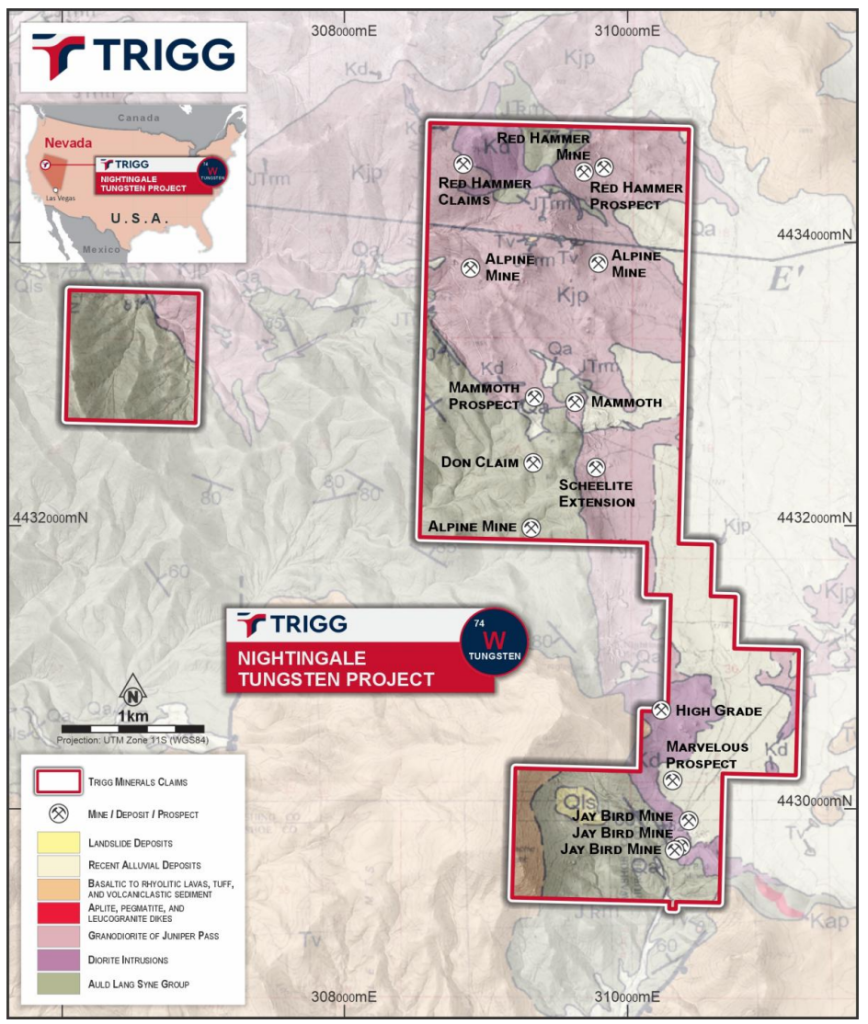Nightingale Project
The Nightingale Project is a district-scale tungsten exploration opportunity in the historic Nightingale Mining District, Pershing County, Nevada, USA.

The Company has secured a 3-mile mineralised trend of past-producing mines and high-grade prospects. This includes a 100% stake in the Alpine mine, a major high-grade past-producer with historical records showing 564,000 lbs of 70% WO3 concentrate and the southern Garfield Force Mine another high-grade past producer with grades of up to 1.0% WO3 reported.

Nightingale Project location and claim area showing the historical mines and prospects over the geology.
Historical Context
The Nightingale district has a rich mining history dating back to the 1940s, when several small but high-grade tungsten mines operated along the 3-mile mineralised trend. The most significant, the Alpine Mine, produced approximately 564,000 pounds of 70% WO₃ concentrate between 1943 and 1946. Other nearby workings, including the Garfield Mine, also reported encouraging grades.
Exploration Potential
Extensive historical data collected by the USGS and USBM highlights the strong exploration potential of the Nightingale district, now under TMG’s management. Historical mining only reached shallow depths of about 39 metres, while a comprehensive 1940s USBM diamond drilling program intersected the mineralised tactite horizon at depths between 80 and 107 metres. All nine drill holes confirmed the continuation of high-grade tungsten mineralisation well below the old workings, demonstrating significant vertical continuity. Importantly, the system remains completely open and untested down-plunge, presenting a compelling opportunity for TMG to explore and expand mineralisation across its surrounding tenure.
Geology & Mineralisation
The Nightingale district is an example of a contact-metamorphic skarn system. A large granodiorite intrusion has penetrated steeply dipping metamorphosed sedimentary rocks of the Triassic-aged Auld Lang Syne Group, primarily limestones and shales. Where the intrusion encountered reactive limestone beds, intense alteration formed dense calc-silicate rocks known as tactite or skarn, which host tungsten mineralisation as disseminated scheelite (CaWO₄).

